UNESCO World Heritage Attractions in Istanbul You Must Visit
Istanbul, the vibrant heart of Turkey, boasts a history as rich and layered as the spices in its famous bazaars.
Straddling the Bosphorus Strait, a natural bridge between Europe and Asia, the city has been a coveted crossroads of empires and cultures for millennia. Its past whispers from the towering Hagia Sophia, echoes in the grand halls of Topkapi Palace, and stands firm in the weathered stones of the ancient Theodosian Walls.
Istanbul proudly holds a collection of treasures within its historic core. In 1985, UNESCO inscribed the "Historic Areas of Istanbul" onto its prestigious list, recognizing the incredible concentration of cultural and architectural marvels within the city. This designation encompasses four distinct conservation areas, each presenting a different facet of Istanbul's captivating history.
So, get ready to discover top UNESCO World Heritage attractions in Istanbul that you cannot miss.
List of UNESCO World Heritage Sites in Istanbul
- Sultanahmet Archaeological Park
- Hagia Sophia (Ayasofya)
- Topkapi Palace (Topkapi Sarayi)
- Hippodrome of Constantinople
- Hagia Irene (Aya Irini)
- Süleymaniye Mosque
- Zeyrek Conservation Area
- Land Walls (Walls of Constantinople)
1- Hagia Sophia

The Hagia Sophia, also called Ayasofya (Holy Wisdom in Turkish and Greek), is one of the most popular landmarks in Istanbul, with a fascinating history. The Hagia Sophia, also called Ayasofya (Holy Wisdom in Turkish and Greek), is a landmark in Istanbul, Turkey, with a fascinating history. Imagine a place that's been a church, a mosque, and a museum, all rolled into one! That's the Hagia Sophia for you.
Built way back in 537 AD by the Eastern Roman Empire, it was a grand church for nearly 1000 years. The architectural style is Byzantine, known for its massive dome and beautiful mosaics. It was an engineering marvel in its day!
After the Ottoman conquest of Istanbul in 1453, the Hagia Sophia was converted into a mosque. Minarets were added, and some of the Christian mosaics were plastered over. Even with the changes, it remained an awe-inspiring building.
In 1931, the building was closed to the public. Then, in 1935, it reopened as a museum. This allowed people of all faiths to appreciate its architectural and historical significance. The Hagia Sophia became Turkey's most popular tourist attraction.
In 2020, there was a big change. The Hagia Sophia's status was switched back to a mosque. This decision caused some discussion, but it reflects the building's long and rich history as a place of worship.
Today, the Hagia Sophia is a mosque again, but it's also still open to visitors outside of prayer times.
2- Topkapı Palace
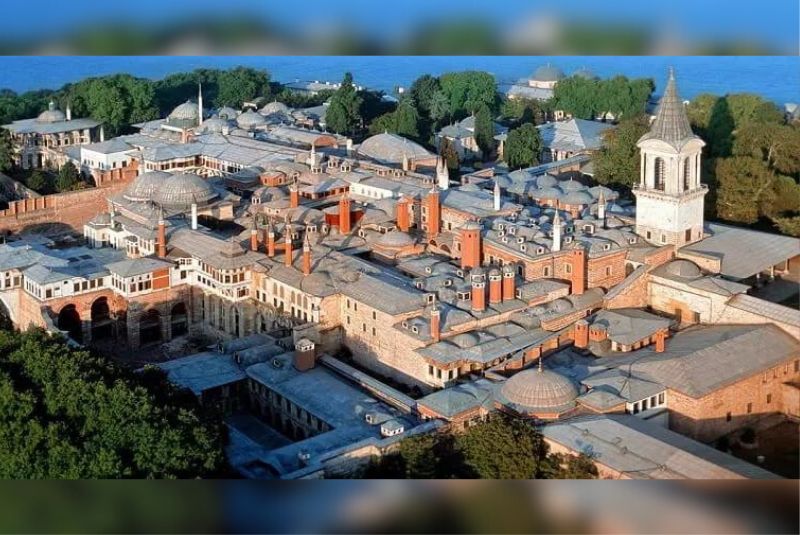
The Topkapı Palace is a majestic museum complex in Istanbul, Turkey. It served as the administrative center and main residence of Ottoman sultans for nearly four centuries, from the 1460s to 1856. Today, it's a UNESCO World Heritage Site and a must-see for anyone visiting Istanbul.
Built by Sultan Mehmed II (the conqueror of Constantinople) in the 1460s, Topkapı Palace reflects the grandeur and power of the Ottoman Empire. Imagine sprawling courtyards, intricate pavilions, and lush gardens – that's the kind of place it was. Over the years, the palace was expanded and renovated by different sultans, showcasing the evolving styles and needs of the Ottoman rulers.
The palace is divided into several courtyards, each with its own significance. Visitors enter through the imposing Gate of Salutation. In the First Courtyard, you'll find the Hagia Irene, a fascinating Byzantine church that predates the Ottoman conquest.
Venture deeper, and you'll reach the Second Courtyard, where the Imperial Mint once produced Ottoman coins. The Third Courtyard is the heart of the palace, where the grand Divan Hall hosted imperial councils and diplomatic receptions. This hall is known for its stunning Iznik tiles and intricate gold decorations.
A separate section, the Harem, housed the sultan's family and concubines. This private world housed the sultan's family and concubines. With its lavishly decorated chambers, serene gardens, and elaborate bathhouses, the Harem was a world of its own, reflecting the sultan's wealth and power.
Topkapı Palace stands as a powerful symbol of the Ottoman era's grandeur and artistry. It's a place where history comes alive, captivating visitors with its architectural marvels, rich stories, and stunning collections.
3- Hippodrome of Constantinople
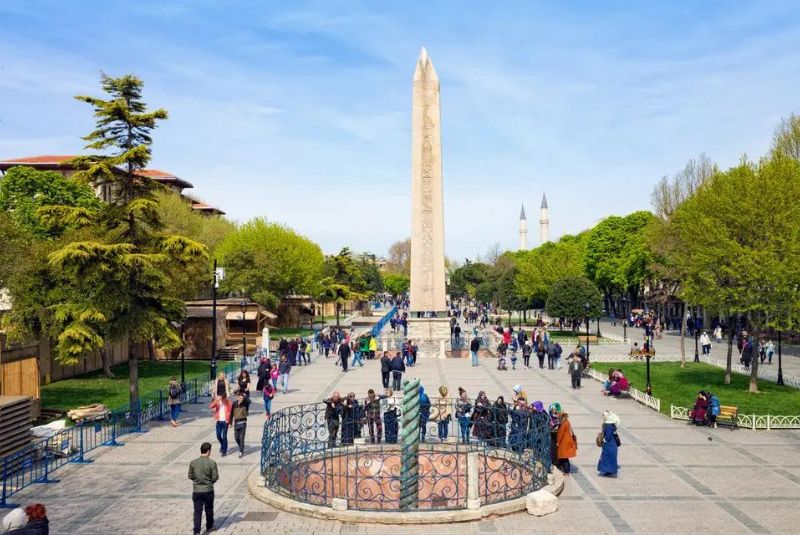
The Hippodrome of Constantinople, now known as Sultanahmet Square, was once the bustling center of Byzantine entertainment. Chariot races thundered through the arena, crowds roared with excitement – that was the Hippodrome in its prime! Built in the early 2nd century AD, it was expanded by Emperor Constantine the Great in the 4th century and connected to the grand Imperial Palace. While chariot racing was the main attraction, the Hippodrome also hosted public ceremonies, gladiatorial contests, and even executions.
Today, Sultanahmet Square still holds onto its past with relics like the Obelisk of Theodosius and the Serpent Column. Though no longer a functioning arena, the square remains a lively gathering place, a vibrant echo of the Hippodrome's glory days.
4- Hagia Irene
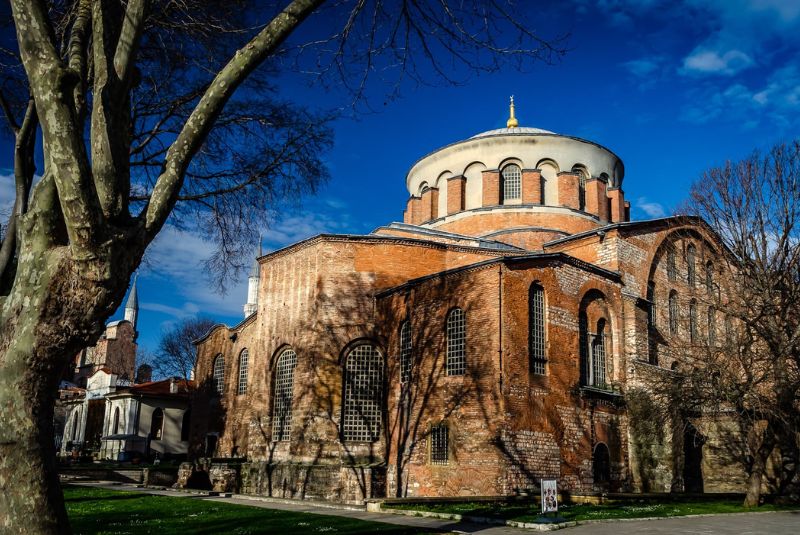
Hagia Irene, also sometimes known as Saint Irene or Aya Irini, resides in the outer courtyard of Istanbul's Topkapı Palace. This Eastern Orthodox church holds the distinction of being the oldest church in the city and the only Byzantine church that never underwent conversion into a mosque. Its history stretches back to the 4th century, making it a true survivor!
Originally built on the site of pagan temples, Hagia Irene's name translates to "Holy Peace." Despite its peaceful beginnings, the church has witnessed its share of dramatic events. Damaged during the Nika Revolt in the 6th century, it was later restored by Emperor Justinian I. For centuries, Hagia Irene served as a house of worship, a place of solace for Byzantine Christians.
Following the Ottoman conquest of Constantinople in 1453, Hagia Irene's fate took a unique turn. Unlike its grand neighbor Hagia Sophia, it wasn't converted into a mosque. Instead, the Ottomans repurposed it as an arsenal, storing weapons within its hallowed halls. This new role, though different from its original purpose, ensured Hagia Irene's survival.
Today, Hagia Irene operates as a museum and concert hall. Visitors can admire its impressive Byzantine architecture, including the central dome and brickwork.
5- Süleymaniye Mosque
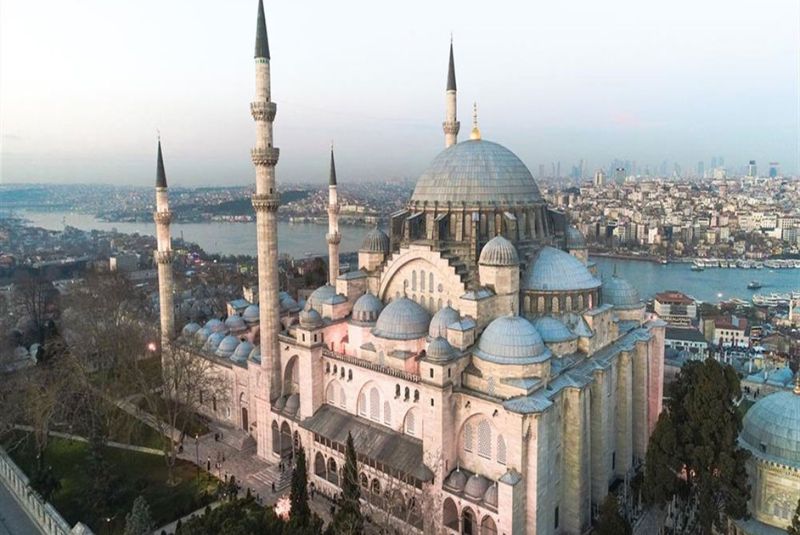
The Süleymaniye Mosque, also known as the Süleymaniye Camii, is a magnificent Ottoman imperial mosque situated on Istanbul's Third Hill. Commissioned by Sultan Süleyman the Magnificent (reign 1520-1566) and designed by the renowned architect Mimar Sinan, construction began in 1550 and finished in 1557. The mosque is considered a masterpiece of Ottoman architecture and one of Mimar Sinan's greatest works.
Towering over the city, the Süleymaniye Mosque boasts a grand central dome, four minarets, and a sprawling complex that includes a madrasa (Islamic school), a caravanserai (inn), a hospital, and a public kitchen. This complex reflects the mosque's role as a major social and cultural center in Ottoman society.
The mosque's interior is awe-inspiring, featuring intricate tilework, calligraphy, and stained glass windows. The sense of space and light is emphasized by the supporting semi-domes and the monumental arched spaces. The mosque's design is not just visually stunning, but also innovative for its time, incorporating advanced engineering techniques for earthquake resistance.
The mausoleums of Sultan Süleyman and his wife Hürrem Sultan (Roxelana) are located behind the mosque, making it a revered pilgrimage site. Today, the Süleymaniye Mosque remains a functioning place of worship and a popular tourist destination, inviting visitors into Ottoman grandeur and piety.
6- Zeyrek Conservation Area
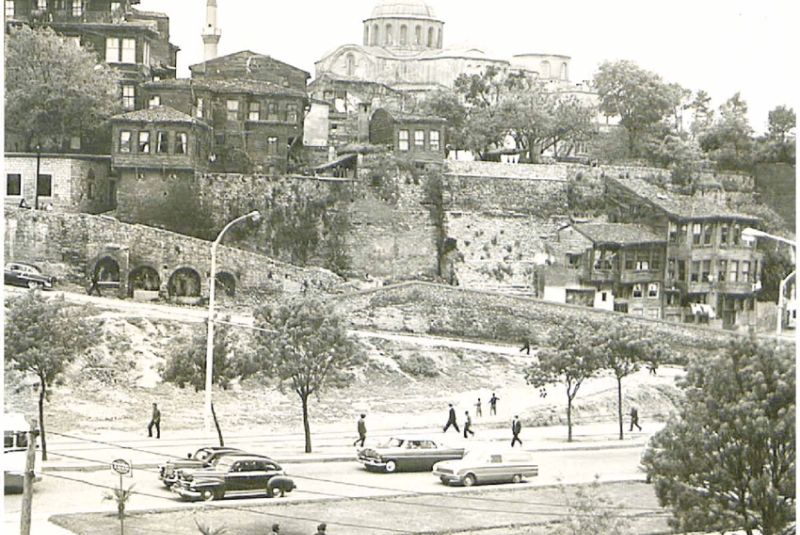
Stepping off the beaten path in Istanbul, you'll find the Zeyrek Conservation Area, a captivating neighborhood where time seems to bend. This area's story stretches back centuries. Byzantine emperors once called it home, with the 12th-century Pantocrator Monastery being a prominent landmark. After the Ottoman conquest of Constantinople, the monastery was converted into the Molla Zeyrek Mosque, a stunning example of Byzantine architecture repurposed for Islamic worship.
Zeyrek's architectural treasures extend beyond the Molla Zeyrek Mosque. The Çukur Çeşme (Pit Fountain) with its intricate carvings and the tiled Çinili Hamam (Tiled Bathhouse) designed by Mimar Sinan are must-sees. Wandering the narrow streets, you'll also find traditional Ottoman wooden houses, some beautifully restored.
The Zeyrek Conservation Area isn't just about historic buildings. It's a vibrant community where history and modern life coexist. Local shops and cafes line the streets, adding a touch of everyday charm to the historical atmosphere.
7- Land Walls
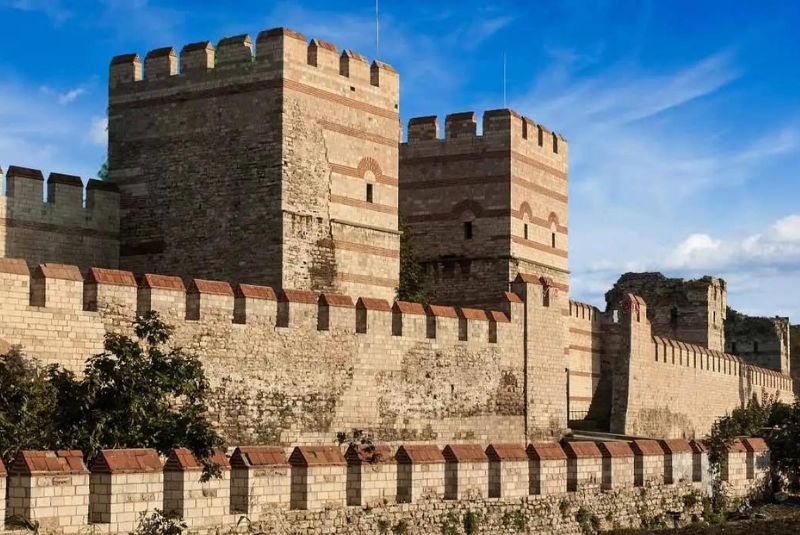
Istanbul's historic heart throbs within the embrace of the Land Walls, also known as the Theodosian Walls. Think of a massive fortification system, a stalwart guardian protecting an empire for centuries – that's the Land Walls in their prime. Erected in the 5th century AD by Emperor Theodosius II, they stand as a testament to Roman engineering genius and a UNESCO World Heritage Site.
Though partially ruined today, these walls once formed a formidable barrier, encircling the city and safeguarding it from land-based attacks. They were a marvel of their time, featuring a triple-layered defense system with inner, outer, and even moat walls. Towers punctuated the landscape, bristling with soldiers ready to repel invaders.
For centuries, the Land Walls played a pivotal role in defending Constantinople, the capital of the Eastern Roman Empire (often called the Byzantine Empire). They withstood numerous sieges, repelling waves of attackers from various empires. Their resilience earned them the nickname "the impregnable walls."
While their defensive role has faded, the Land Walls still hold immense historical significance. Walking along their remnants offers a journey through time. You can explore the various gates, some grand and ornate, others more utilitarian. Gaze upon weathered towers, each one whispering stories of battles fought and defended.
Tips for Visiting Istanbul's Heritage Sites
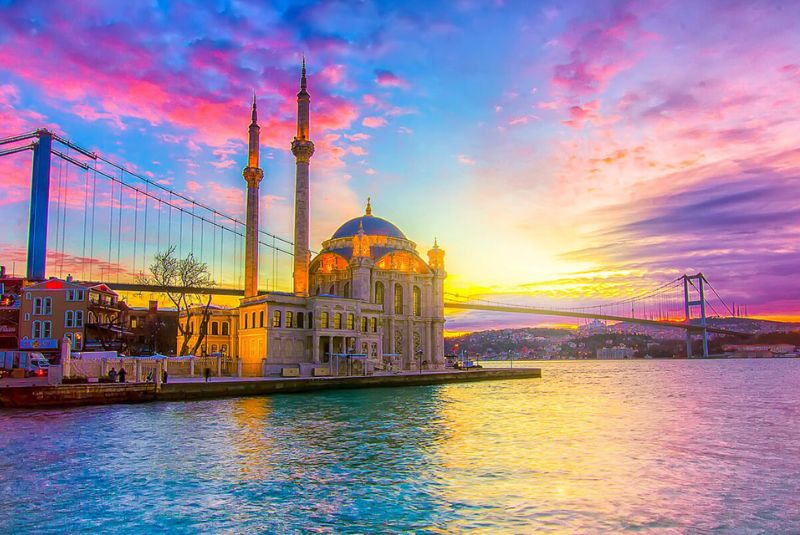
Istanbul is a treasure trove of history, with ancient landmarks around every corner. From Byzantine churches to Ottoman palaces, getting lost in the city's past is half the fun! But with so many sights to see, a little planning can go a long way. Here's a quick guide to help you navigate Istanbul's historical wonders:
- Decide which historical sites top your list. Research their opening hours, ticket prices, and dress codes (especially for mosques). A Museum Pass Istanbul can save you money on entrance fees at many popular spots.
- Pack comfy shoes! Exploring Istanbul's heritage sites involves a lot of walking, so ditch the stilettos and embrace supportive soles.
- Dress modestly when visiting mosques or religious areas. This means covering shoulders and knees for everyone. Some mosques offer headscarves to borrow.
- Popular sites can get packed, especially during the summer rush. Consider visiting early in the morning or during the spring and fall shoulder seasons for a more relaxed experience.
- While some shops have set prices, bargaining is part of the fun in traditional markets like the Grand Bazaar. Do some research beforehand to have a general idea of fair prices.
- Most historical sites allow photography, but some may have restrictions on flash or tripods. Be respectful and avoid taking photos during religious ceremonies.
- While some places accept major currencies, having Turkish Lira on hand is always helpful for smaller purchases and street vendors. ATMs are widely available throughout the city.
- Many museums offer free admission on specific days. Check individual websites for details. This can be a great way to save money and avoid crowds.
- While English is spoken in tourist areas, learning a few basic Turkish phrases can go a long way. It shows respect for the local culture and can help you navigate interactions with vendors or locals.
Final Takeaway
Istanbul's designation as a UNESCO World Heritage Site is well-deserved. The city boasts a remarkable collection of historic sites, each presenting the city’s captivating past. Don't miss visiting UNESCO world heritage attractions in Istanbul– they're sure to leave you awestruck!
Share your story!
Comment below and let us know about your Experience.
Your story inspires others!
Comment
Leave a Comment